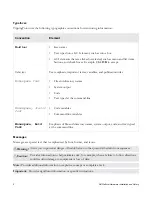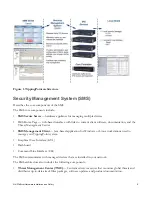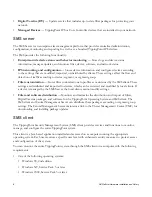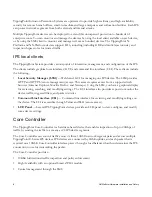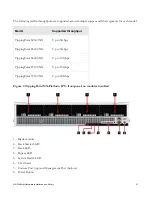
NX-Platform Hardware Installation and Safety
7
• Windows XP
• Windows 7
• Apple OS X
• Red Hat Linux
• One of the following browsers:
• Microsoft Internet Explorer, version 6.0 or higher
• Firefox
• Safari
The SMS features a policy-based operational model for scalable and uniform enterprise management.
It enables behavior and performance analysis with trending reports, correlation and real-time graphs.
Reporting includes all, specific, and top attacks and their sources and destinations, as well as all, specific, and
top peers and filters for misuse and abuse (peer-to-peer piracy) attacks. You can create, save, and schedule
reports using report templates. All reports are run against system and audit logs stored for each device
managed by the system. These logs detail triggered filters. You can modify, update, and control distribution
of these filters according to segment groups for refined intrusion prevention.
The SMS dashboard provides at-a-glance monitors with launch capabilities into the targeted management
applications that provide global command and control of TippingPoint. Included in the SMS dashboard
display are the following items:
• Entries for the top five filters triggered over the past hour in various categories
• A graph of triggered filters over the past 24 hours
• The health status of devices
• Update versions for software of the system
Through the Dashboard, you gain an overview of the current performance of your system, including
notifications of updates and possible issues with devices monitored by the SMS.
Intrusion Prevention System devices
Intrusion Prevention System (IPS) devices protect your network with the Threat Suppression Engine (TSE)
by scanning, detecting, and responding to network traffic according to the filters, action sets, and global
settings maintained on each device by a client.
Each device provides intrusion prevention for your network according to the number of network
connections and hardware capabilities. IPS devices also have built-in intrinsic high-availability features,
guaranteeing that the network keeps running in the event of system failure.








